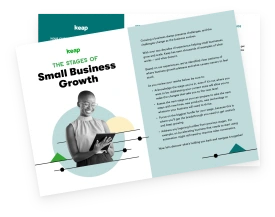When it comes to efficient email marketing management, properly maintaining your contact list is critical, yet often neglected. Once an organic list has reached a level of quality contacts, you’ll want to preserve the integrity of the list to avoid having duplicate contacts or continuing to send emails to those who never click open.
Ongoing management of your email marketing will prevent hard bounces, soft bounces, and unengaged subscribers to help you avoid a negative impact on email deliverability, further affecting your email marketing key performance indicators (KPIs).
Here are 5 ways to manage your email list management:
1. The welcome email
Once a subscriber has requested to receive your emails, start with a welcome message thanking them and confirming their subscription. This is also an opportunity to request that they add your email address to their approved senders list so your emails don’t end up in their junk or spam folders.
The welcome email is also a good occasion for revealing what subscribers can expect from their list membership as far as what kind of content they can anticipate and how often they can expect to see emails from your company.
You can also provide them contact information should they need to get in touch due to any issues, and inform them how to adjust their email preferences or opt-out if they decide they no longer want to receive messages from you.
2. Monitor email frequency
The most common reason why people unsubscribe from email marketing lists is the amount of emails they receive. Many companies send the same emails far too frequently, frustrating subscribers and compelling them to opt-out. As mentioned above, upon sending the welcome email, give your subscribers the ability to manage their email preferences and customize the content they want to receive from you and how often. This puts your contacts in control and creates a degree of understanding between you and them instead of disregarding your contacts’ preferences and inundating them with annoying messages on an hourly basis.
Maintaining your subscriber list will help your company follow CAN-SPAM compliance and prevent you from losing contacts altogether when volume or content becomes an issue. If your company has invested in a reputable email service provider (ESP) or marketing automation platform, it has integrated subscription management functionality that works as long as it’s enabled.
Check out Keap's Lifecycle Automation Assessment to determine where your business stands among the industry's top performers.
3. Maintain list hygiene
Performing email list hygiene tends to get overlooked by many companies and yet is crucial for maintaining a healthy email list of subscribers. Most email lists are reduced by approximately 25% each year. Eradicating your company’s contact list of invalid emails is essential if you want to avoid hard bounces. Set a goal to do this once per quarter or when you’re preparing to do a major campaign to accommodate for the incidences of people leaving jobs or changing their email addresses.
Consistently removing all hard bounces and recurring soft bounces from your lists will maintain your email list’s healthy reputation and help avoid repeatedly sending emails to invalid addresses.
4. Launch a reengagement campaign
The first step that needs to be completed before launching a reengagement campaign is to identify and remove all unengaged subscribers. It wouldn’t benefit the company to still include those contacts, as sending emails to unengaged subscribers negatively affects sender reputation.
Unengaged subscribers may still have a valid email address, but haven’t opened and/or clicked one of your emails within the last 6 to 12 months. They may have mentally unsubscribed from your brand without actually taking action and hitting the opt-out button on the bottom of the email. When subscribers ignore or delete your company’s emails, it affects your open rate, resulting in a low sending score.
Once you’ve identified contacts who are unengaged, it’s time to start planning your reengagement campaign. Send a targeted message acknowledging that they haven’t interacted with your emails in a long time and ask if they’re still interested in hearing from you. This helps you reengage your unengaged subscribers, as well as purge your lists of those who don’t interact with the reengagement campaign.
5. Help them opt out
A big part of maintaining your email marketing list is
Plus, every company is held to CAN-SPAM compliance, which means it’s mandatory for companies to allow their subscribers to opt out. It’s important that unsubscribe button on the bottom of your email is prominent so no one accuses you of trying to hide or bury it.
Email marketing excellence
When it comes to quality over quantity, it not only applies to what’s inside your email’s content, but the quality of your contacts. It’s preferable that your email list is populated with fewer engaged subscribers than a long list of people who never click to open.
Successful companies make it a priority to manage their email marketing lists, ensuring they remain free of invalid email addresses as well as unengaged and uninterested contacts. Compliant companies know how to grow their email marketing lists organically with a solid email marketing program that employs permission-based, subscription tactics.
Businesses should never consider purchasing or renting lists just to make them look more expanded. Most of those lists consist of bots that will never engage, bringing the open rate down and not benefiting the company at all. It’s healthy to approach email marketing with an honest process that involves proper list management for guaranteeing ongoing email marketing success.
Email is an effective channel for small businesses to generate revenue, nurture leads, close business or keep your customers in the know. Keap can help you take your email to the next level.


